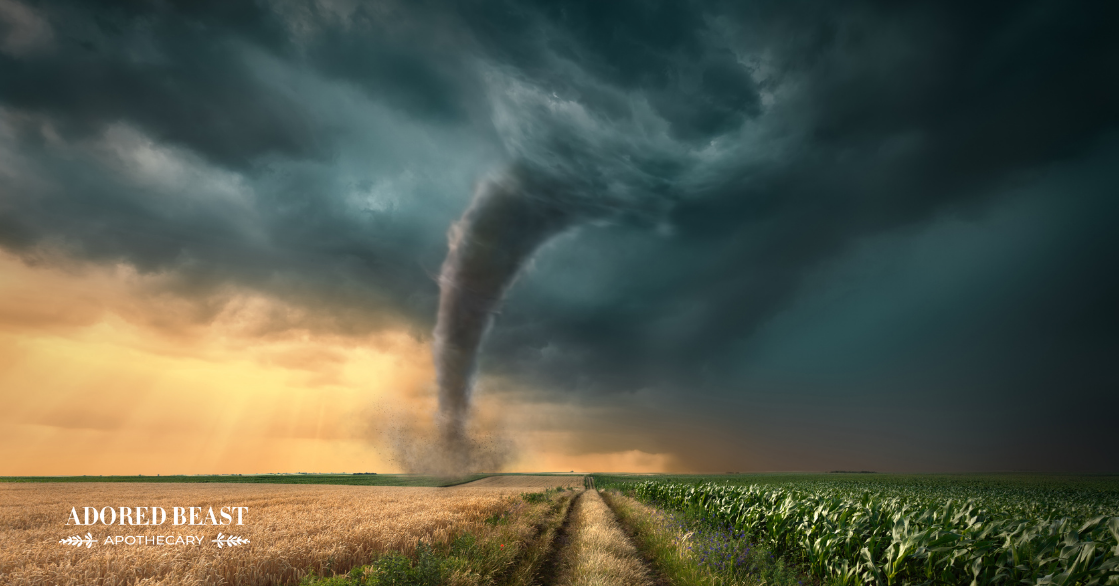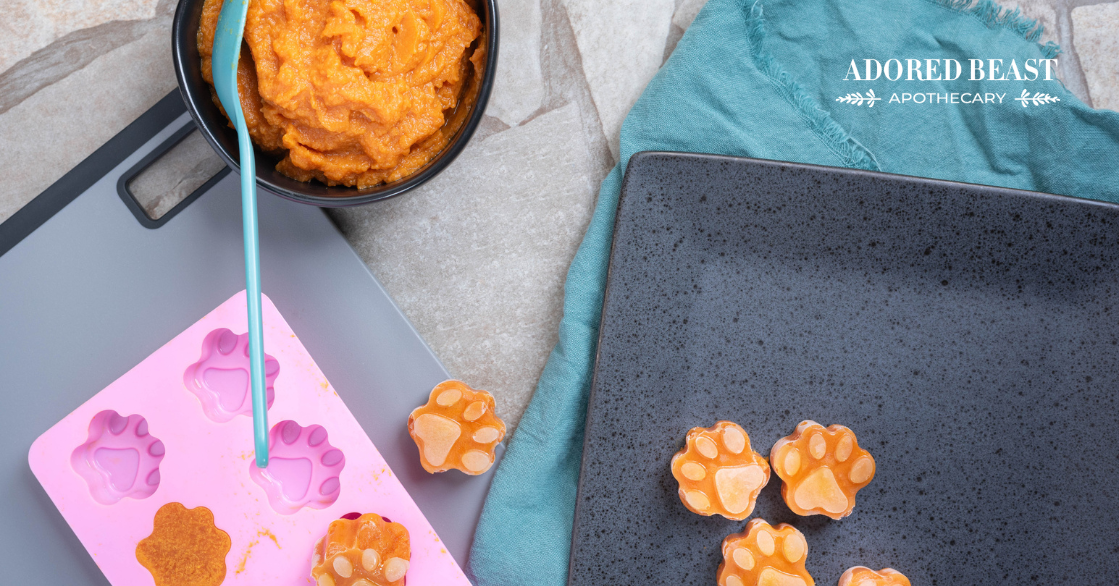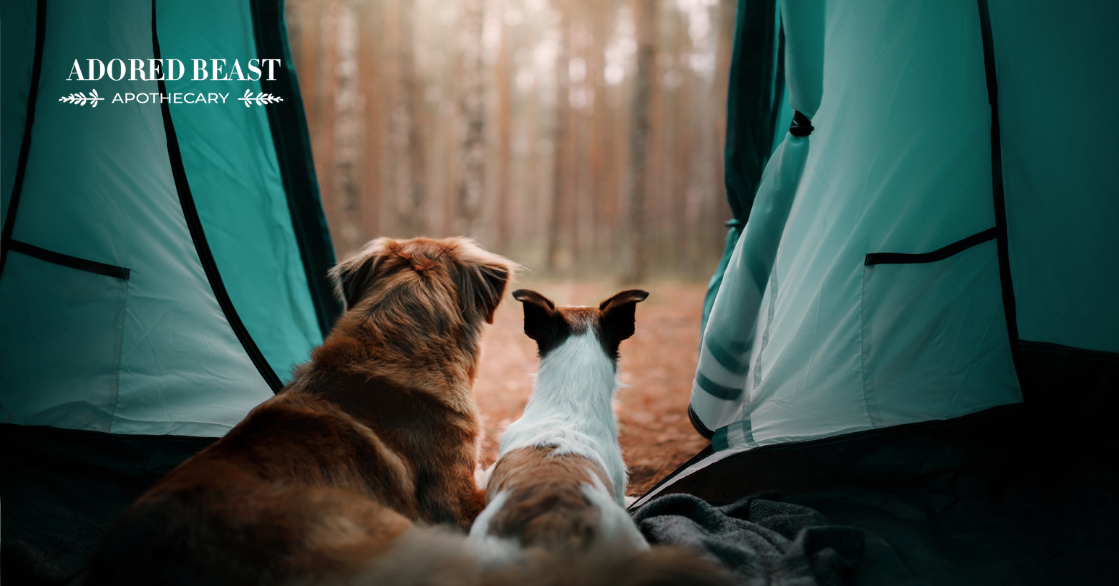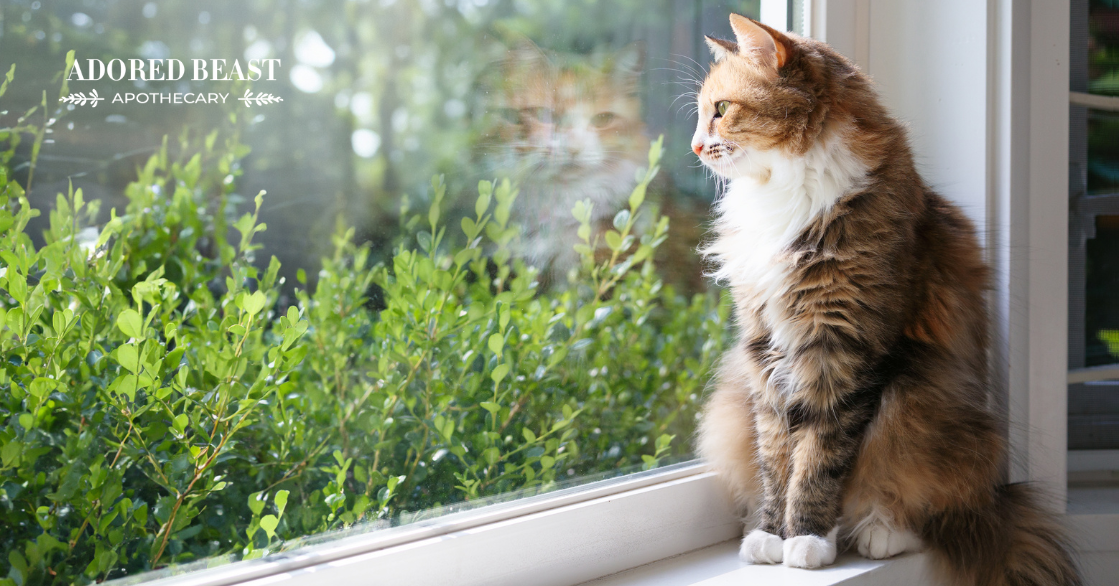Every year around this time we start to hear the reports about the fires that spread in various parts of North America. And it makes us think about the different types of natural disasters take us from our homes, no matter where we live.
Thinking about these often catastrophic events makes animal disaster preparedness important. Many of use have kits ready in the case of evacuation: non-perishable foods, bottled water, first aid… But what about for our animals?
Whether you live in an area prone to fires, hurricanes, or tornados, or just know that the annual blizzard will cause a massive change in routine and accessibility to everyday comforts, an animal disaster preparedness kit is really important. It never hurts to have a few key items stashed away and easy to grab as you’re rushed out the door.
So, what items should you keep in this kit?
DIY Animal Disaster Preparedness Kit
Here’s what we recommend keeping on hand.
1. Food and Water
We recommend having a 2-week supply of food. This is critical if you feed raw as you may not be able to get food if power is out. A good alternative is a dehydrated raw food, one that is shelf stable for a good period of time. If you feed kibble, make sure that this is an unopened bag. Whatever you choose to include, be sure to refresh it (swap it with a new bag) every few months. Canned dog and cat food are good too, as is canned tripe! They’ll have a longer shelf life. Consider storing this food in a waterproof container, just in case.
Water is also essential, just as it would be for your human family. Store this in a cool, dry place, and refresh every few months.
A small collection of supplements may also be helpful, especially those you feed for a health concern. Powdered bone broth is good for quick nutrients, and can be helpful if a pet is stressed and has some stomach upset. So too is pure canned pumpkin. Phytoplankton is also great here – especially if you’re going from a nutrient-dense raw food to kibble (and that’s fine!!!). It’s good to help boost the immune system and help with delivering key nutrients. It’s light, and small, and easy to store and carry with you (it’s incredible for you too!). CBD oil (with zero THC) can also be helpful for reducing stress.
Don’t forget a set of bowls as well. And, if you have canned food, a can opener.
2. First Aid Kit
This is another must-have in your animal disaster preparedness kit. A few simple staples can prove vital in a bind, for both tiny cuts and scrapes to bigger issues.
In our kit, we make sure to keep:
- Gauze or cotton swabs (not cotton balls! they leave little strands and can cause infection )
- Non-stick Bandages or Wraps
- Medical tape
- Scissors
- A tick removal tool (here’s how to use it properly)
- Tweezers
- A towel or cloth
- Clean water
- Saline solution (make your own by adding 1/4 teaspoon of table salt to one cup of purified water)
- Packages of electrolytes (without xylitol or aspartame). This can be really helpful if there is dehydration and you are far away backpacking until you get to a vet.
- A needle-less syringe (for easy administration of electrolytes)
We also make sure we have a stock of herbs and homeopathic remedies, including things like calendula and horsetail (topicals) and homeopathic remedies aconite and arnica (internal). These remedies can literally be life-saving for you and your animals for shock and intense trauma until you can get to a hospital or medical care arrives. A bottle of Your Go-2 is easy to keep.
To find out more about the specific remedies, and how to use them, please visit this post.
3. Crate and Bedding
If you’re evacuated, you may have to stay somewhere that your pet will need to be secured. For example, if you go to a hotel that may not allow pets, may allow you to bring them in in a crate. It also just helps keep your animal safe!
A crate or cat carrier can be a life-saver in situations like this. To help make it comfortable, have some bedding for inside.
If you can not get to or do not have a cat carrier or a small enough bird cage, use a large pillow case and use something to tie it. This also works for snakes or reptiles, hamsters guinea pigs. Alternatively, a backpack or duffle bag can be used.
To help reduce your pet’s stress in these situations, make some of that bedding smell like you. Take the blanket/pillow/towel and rub it all over your skin to get your smell into the fabric, then put that in the crate.
4. Identification and Paperwork
If you have some warning before the evacuation, get collars on your animals ahead of time. Have leashes at the ready so you can just grab them quickly.
Identification: in an emergency situation where you’ve been evacuated, make sure that your pet is ALWAYS wearing a collar with their name and your phone number (unless they’re secured – for example, at night).
Copies of up-to-date paperwork is also important. Make sure you keep these up to date, particularly the emergency contacts and veterinary records.
5. Creature Comforts
If you’re forced to leave your home in a hurry, you’re likely to be pretty stressed. And as a result, your pet will be stressed as well. Providing them with as many creature comforts as possible is always helpful.
Take a towel, rub it all over your body to get your smell on it, and put that in your kit. A blanket or pillow or bed will also help when it comes to creating a safe space.
A battery-operated fan or one that plugs into a car outlet will help keep a dog cool, which can be critical!
A toy can help calm an anxious dog as well. When thinking about toys, try to pick something that provides mental stimulation as well as comfort. Perhaps that is a tug toy your dog will play with, a puzzle toy that encourages thinking, or really anything they’ll actively engage with. If you can keep the mind active, you can help reduce stress.
6. Odds and Ends
- Cleaning supplies – rags, vinegar, poop bags!
- Litter box and extra litter
- Instructions (food, supplements, medication) for each animal should you need to leave your pet with someone for a few days
- Life jacket if it could be necessary in your area
- Phone numbers of animal rescue agencies, veterinary clinics in the area
- Have someone in mind that you can ask to take your pet in if need be
What to Remember in an Emergency Situation
When an emergency arises, stress and adrenaline kick in, and sometimes we get rattled very quickly. In emergency situations, try to remember these things:
- Always have carriers READY!! Put animals in carriers or creates BEFORE opening doors – the sound of a forest fire is deafening, sirens and alarms and stress levels make animals flee and hide.
- Put leashes on your dogs before taking them out!
- Make sure no one is locked in contained kennels or fencing.
- If leaving your animals behind in an evacuation make sure they are set free – out of barns, houses, and cage.
- Spray paint your phone numbers on sides of horses and livestock
- Do not have choke chains on your dogs. If they get loose, they can get caught on anything and choke to death or be trapped in a fire.
Stress is high in emergency situations, so being well prepped beforehand will help reduce that stress and help ensure nothing important is missed or forgotten. If the power goes out, or you’re forced to leave your home, you’ll feel better knowing your animal is not going to be without! Keeping an animal disaster preparedness kit tucked away is always a good idea.












